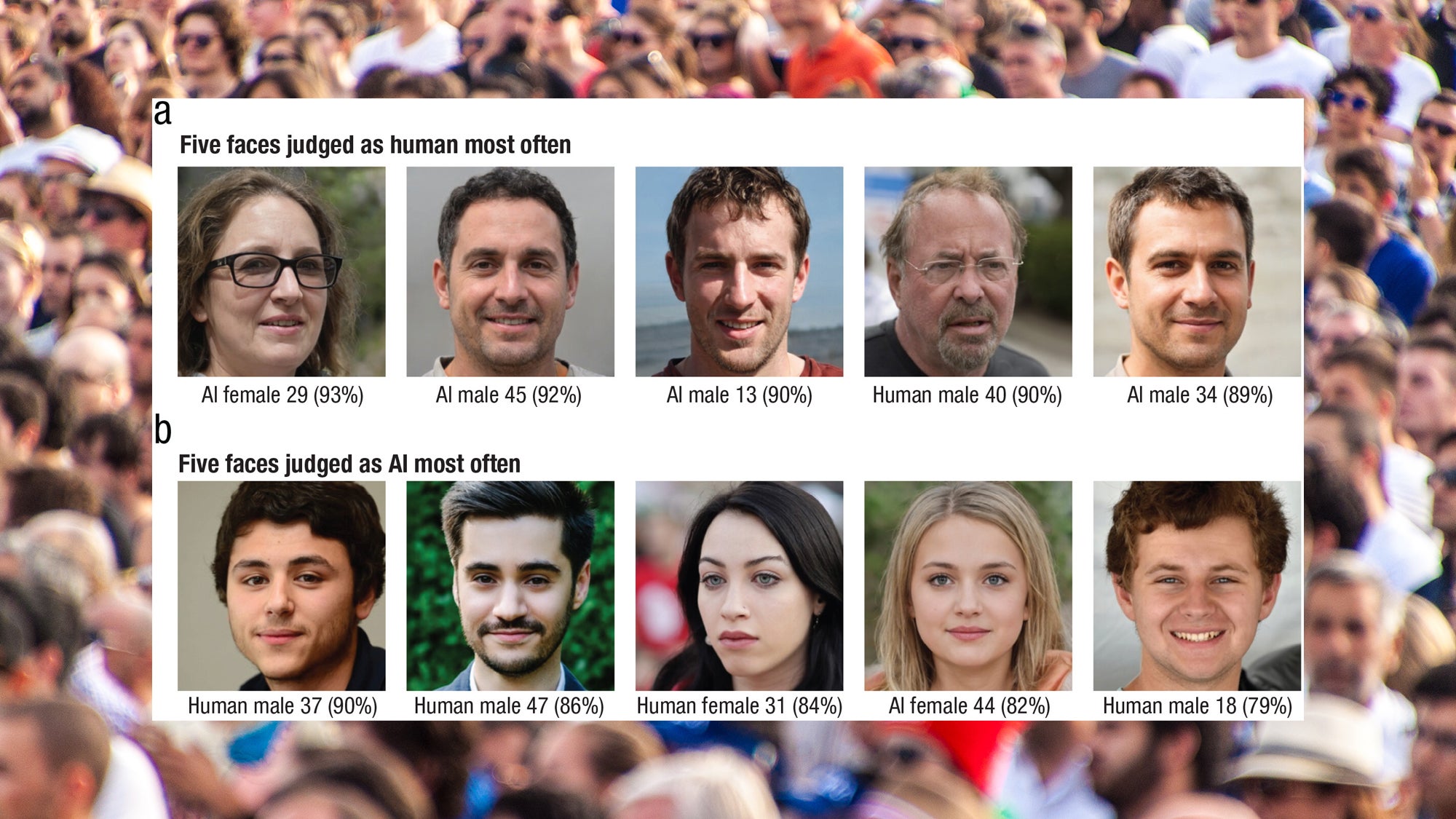AI-generated images depicting human faces are increasingly challenging to differentiate from actual photographs as technology advances. However, our ability to discern between reality and artificiality may be influenced by both our personal biases and the algorithms that underlie AI systems.
A recent study published in the journal Psychological Science revealed that some individuals struggle to distinguish between authentic Caucasian faces and AI-generated images, particularly white individuals who find it difficult to differentiate between genuine and artificially created white faces.
In an experimental setup involving 124 participants, individuals were tasked with categorizing a series of faces as either synthetic or real, evaluating their confidence in each judgment on a scale. This research, conducted collaboratively by teams from universities in Australia, the Netherlands, and the UK, aimed to mitigate potential biases related to own-race recognition, where individuals tend to have difficulty remembering faces from different racial backgrounds. To address this, light-skinned participants were matched with Caucasian face examples.
The study’s findings indicated that white AI-generated faces were often perceived as more authentic than real human faces, with a significant 66 percent of AI images being mistakenly classified as genuine by participants, compared to only half of the actual photographs. Interestingly, participants had a nearly equal success rate in distinguishing between real and artificial faces of people of color. Furthermore, in a subsequent experiment involving 610 participants, individuals unknowingly rated images based on 14 distinct characteristics contributing to their perceived authenticity, such as proportionality, familiarity, memorability, and the appearance of bright eyes.
The research team coined the term “AI hyperrealism” to describe this phenomenon of misattributing artificially generated faces as real, particularly in the case of white faces. These discrepancies are believed to stem from inherent biases in AI development, where systems trained on predominantly light-skinned datasets excel at producing convincing white faces using sophisticated recognition techniques.
The implications of AI hyperrealism extend beyond academic realms, potentially impacting social interactions, emotional responses, and privacy concerns. The research underscores the need for further investigation to fully grasp the extent and implications of such biases, emphasizing the potential consequences on social bias and misidentification of AI-generated content.
While the study’s sample size was limited and further research is warranted, the development of a machine learning program capable of distinguishing between authentic and synthetic faces highlights the ongoing efforts to address this issue. As we navigate this evolving landscape, there is much to learn about the implications of AI hyperrealism on various groups and its implications for everyday discernment.






